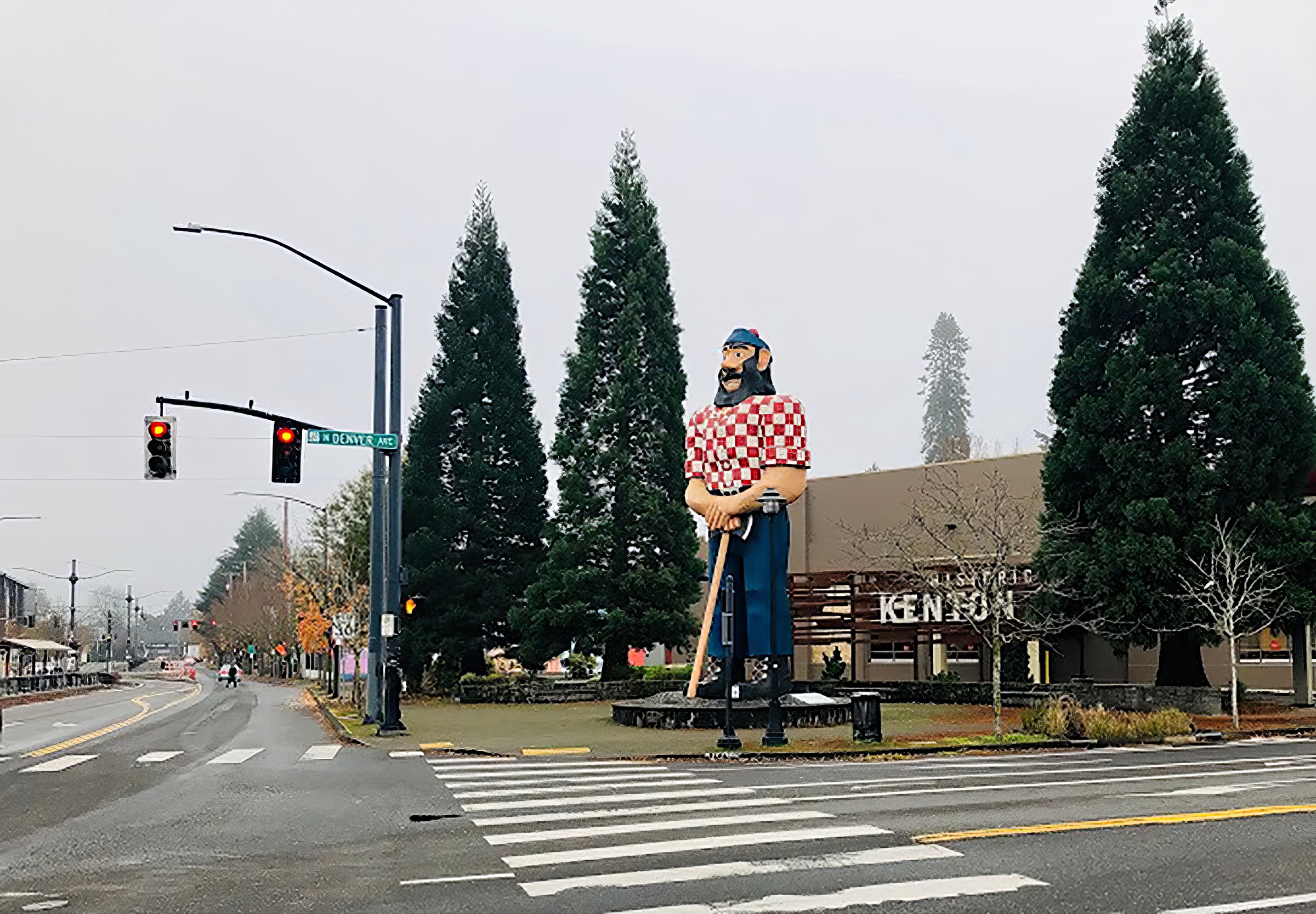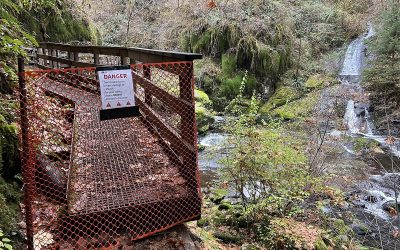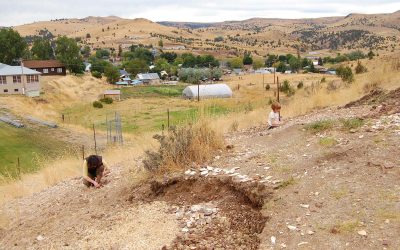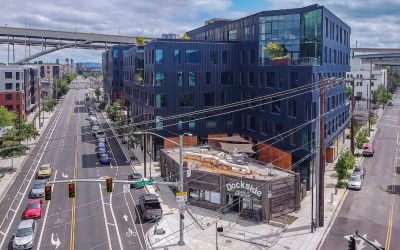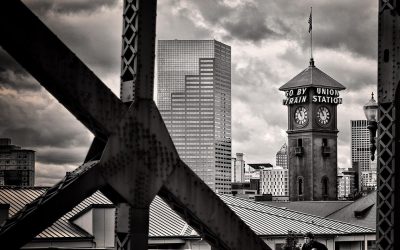Sometimes, we get so accustomed to the extraordinary that we stop appreciating it. Think of the countless breathtaking sights in Oregon, from the thunderous Multnomah Falls to the shimmering depths of Crater Lake, or even the rugged charm of Haystack Rock. While these natural wonders might captivate visitors, they often fade into the background for Oregonians who see them regularly. But it’s not just nature that Oregon is known for—it’s also home to man-made marvels that tell stories as rich as its landscapes. One such monument is the Paul Bunyan statue in Portland, a towering symbol of Oregon’s logging heritage.
Standing 31 feet tall, Portland’s Paul Bunyan has watched over the Kenton neighborhood since 1959, embodying the state’s pioneering spirit. But while this lumberjack is an icon in Oregon, he’s not the only larger-than-life Bunyan on the West Coast. Not to be confused with the famous Paul Bunyan and Babe the Blue Ox at Trees of Mystery in Klamath, California, Oregon’s Bunyan has a unique history and charm of his own. Despite their differences, both statues represent the folklore of a legendary lumberjack that has been passed down through generations.
Portland’s Paul Bunyan: A Centennial Celebration
Portland’s Paul Bunyan statue was built for a very specific reason. In 1959, Oregon was celebrating its 100th birthday, and the city was chosen to host the Oregon Centennial Exposition and International Trade Fair. This grand event brought in over 1.5 million visitors during its 100-day run. To welcome guests in true Oregon fashion, organizers decided to build a statue of Paul Bunyan, a figure that had come to symbolize the region’s timber-rich past. Standing at the entrance to the Expo, this 31-foot-tall concrete and steel lumberjack became a symbol of Oregon’s pioneering roots and the perfect greeter for the celebration.
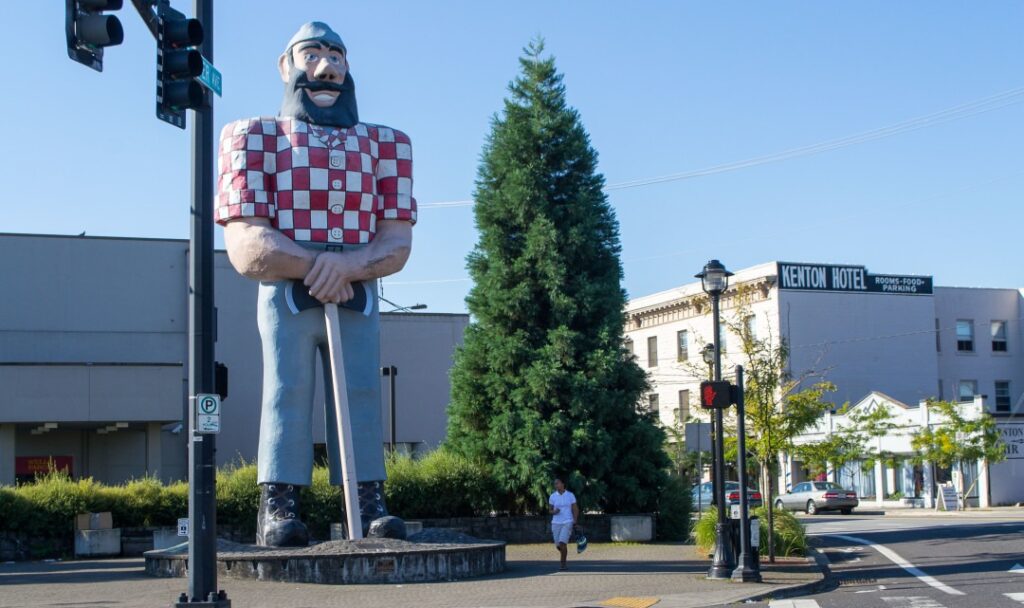
Today, Bunyan stands proudly in Portland’s Kenton neighborhood, a place with its own deep ties to the logging industry. The neighborhood, once home to bustling lumber mills, was the ideal spot for a statue of the mighty logger. With his bright red shirt, blue pants, and thick black boots, Paul Bunyan has become a beloved part of Portland’s cultural landscape. Listed on the National Register of Historic Places in 2009, the statue continues to capture the attention of passersby and tourists alike.
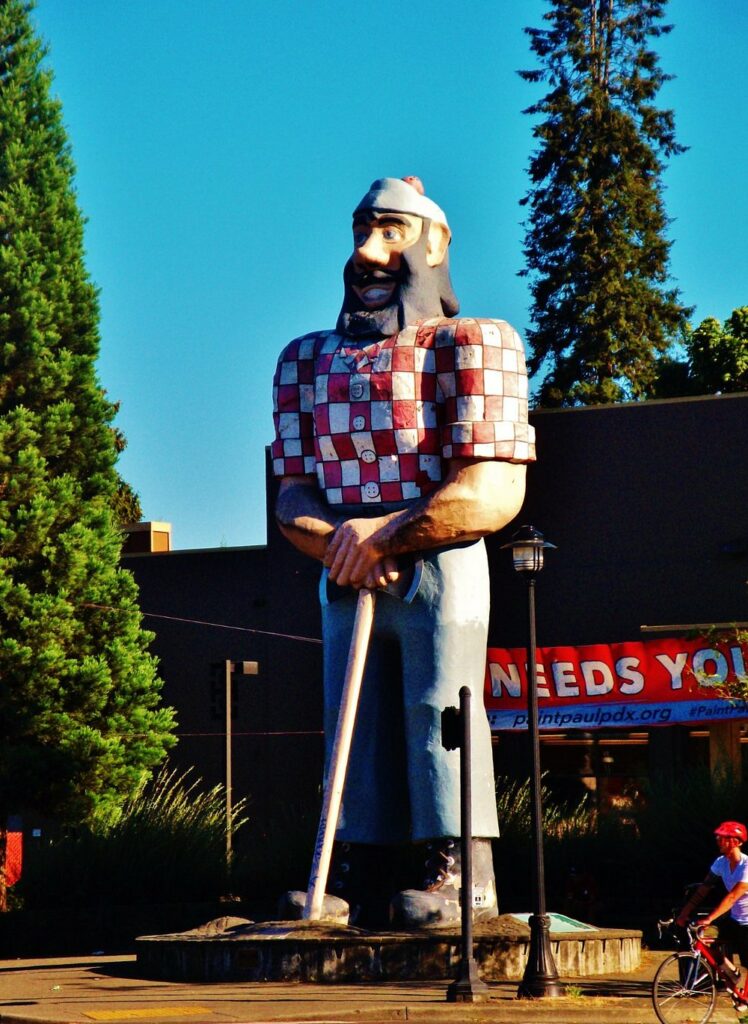
But Portland’s Paul Bunyan, at 31 feet, pales in comparison to California’s towering version at the Trees of Mystery park. The Paul Bunyan statue in Klamath, California, with his blue ox, Babe, at his side. This larger-than-life duo has greeted travelers along Highway 101 for decades, becoming as iconic as the redwoods that surround them. Paul is capable of interacting with tourists by blinking his eyes, tapping his foot, swiveling his neck, and waving his hand.
Founded in 1931, Trees of Mystery is a well-known attraction located 35 miles south of the Oregon border along Highway 101. Visitors are greeted by towering statues of Paul Bunyan and his faithful companion, Babe the Blue Ox, both of which are visible from the highway. Paul Bunyan first made his appearance in 1946 but was damaged by rain soon after. The current statue has been standing since 1961, while Babe has been a part of the attraction since 1950. He holds a 24-foot-long ax and wears boots that are 10 feet tall. There’s even a local legend that on hot days, he grows by about three-quarters of an inch. Babe, standing at 35 feet tall, is humorously known for his distinctive large blue features. In 2007, Babe briefly lost his 1,000-pound head, but it was soon replaced, restoring him to his full glory.
Comparing Two Legendary Lumberjacks
Though both statues depict the same folkloric figure, Portland’s Paul Bunyan and the one in Klamath, California, have some key differences—starting with their size. While Portland’s Bunyan stands at an impressive 31 feet, Klamath’s Paul Bunyan measures a colossal 49 feet, towering over visitors who come to explore the famous redwood forest.
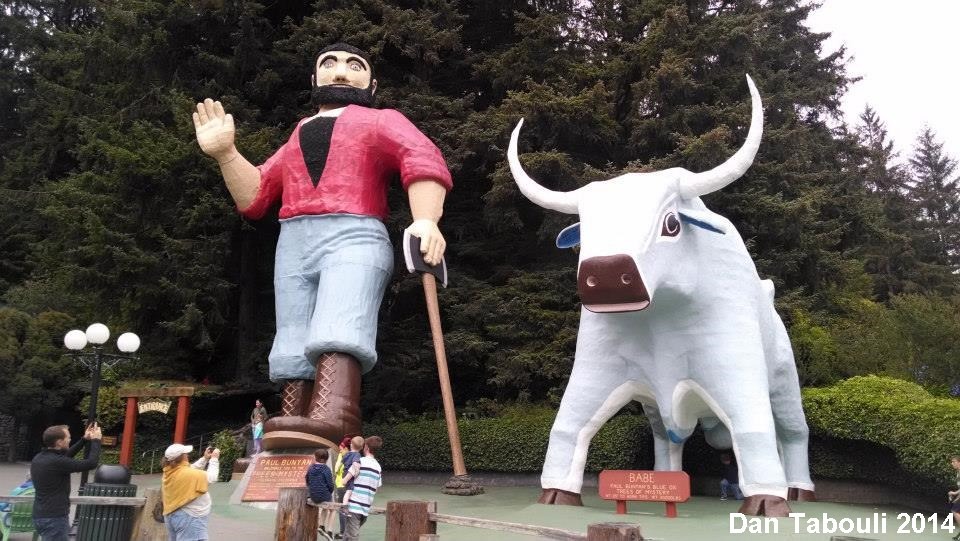
Babe the Blue Ox, who stands beside Paul in California, adds to the larger-than-life feel of the site. Babe alone measures 35 feet at the horn tips and weighs as much as Paul—30,000 pounds!
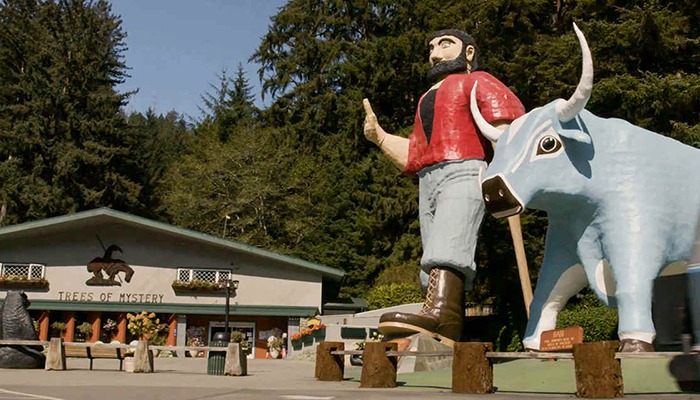
In Portland, however, Paul Bunyan stands solo, which seems fitting given the urban setting. Rather than sharing the stage with his blue ox companion, Portland’s Bunyan is a lone figure, symbolizing the individual strength and perseverance of Oregon’s early loggers. He’s built to withstand the test of time and the ever-changing urban landscape of Portland’s Kenton neighborhood.
Another major difference between the two statues is their interactive element. In Klamath, Paul Bunyan and Babe greet visitors at the entrance to the Trees of Mystery park. Paul is no ordinary statue—he speaks! With an animated wave and a booming “Hello there!” Paul interacts with visitors, often commenting on their outfits or cracking jokes with kids. This interactive experience brings the legend to life, especially for families traveling along Highway 101. The Klamath Bunyan even has a web camera focused on him 24/7, ensuring that no matter where you are, you can get a glimpse of the big guy.
In contrast, Portland’s Paul Bunyan is a silent sentinel. He doesn’t speak or wave, but his stoic expression and crossed arms are just as commanding. While he might not greet you with a joke or question, his presence alone is enough to remind visitors of the state’s logging heritage and the pioneering spirit that helped shape Oregon.
A Tribute to Folklore and History
Despite these differences, both statues share deep connections to the folklore of Paul Bunyan and the rich history of the Pacific Northwest. The stories of Paul Bunyan—his incredible strength, his trusty blue ox, Babe, and his legendary ability to reshape landscapes—originated in the logging camps of the 19th century. These tall tales were a way for loggers to entertain one another during long, grueling days in the wilderness. Paul Bunyan was more than just a character; he was a symbol of the strength, endurance, and camaraderie that defined life in the forests.
In Portland, Paul Bunyan stands as a reminder of Oregon’s logging past. His 31-foot frame represents the tough, hardworking spirit of the state’s pioneers who helped shape the land. Meanwhile, in Klamath, Paul and Babe stand amidst the towering redwoods, celebrating not only the region’s history but also the natural wonders of Northern California. Each statue has its own unique personality and significance, but both serve as tributes to the logging heritage of the Pacific Northwest.
Two Bunyans, One Legendary Legacy
While Portland’s Paul Bunyan might not have the towering height or talking abilities of his Klamath counterpart, he holds his own as a symbol of Oregon’s history and folklore. Both statues are beloved local landmarks, drawing visitors from near and far to stand in awe of these larger-than-life figures. Whether you’re exploring the urban streets of Portland or venturing through the majestic redwoods of California, a visit to either Paul Bunyan statue is sure to leave an impression.
In the end, Portland’s Paul Bunyan and the Klamath Paul Bunyan may be different in size and location, but they share a common legacy. Both statues celebrate the spirit of the Pacific Northwest and the legendary lumberjack who has come to symbolize the region’s rugged charm. So, the next time you find yourself in either Oregon or California, be sure to stop and say hello to these towering titans—you won’t be disappointed.

